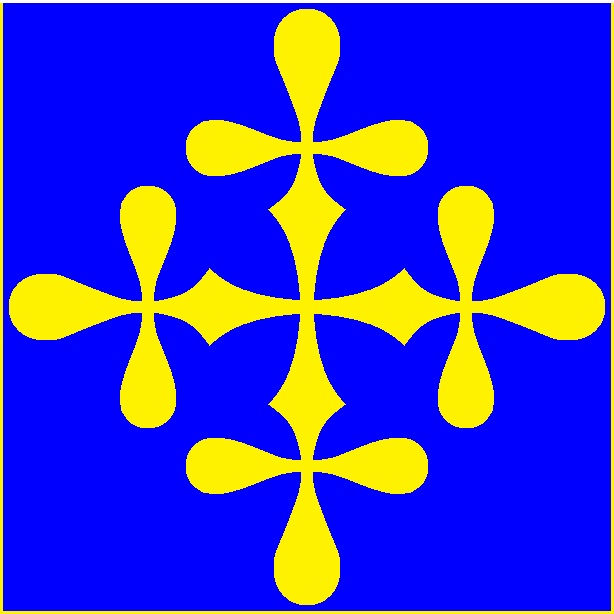 | F/ID-3,000 Ghost Fighter/Intelligence Drone. |  |
|---|
| United Galaxies Council. | United Galaxies Council. |
|---|
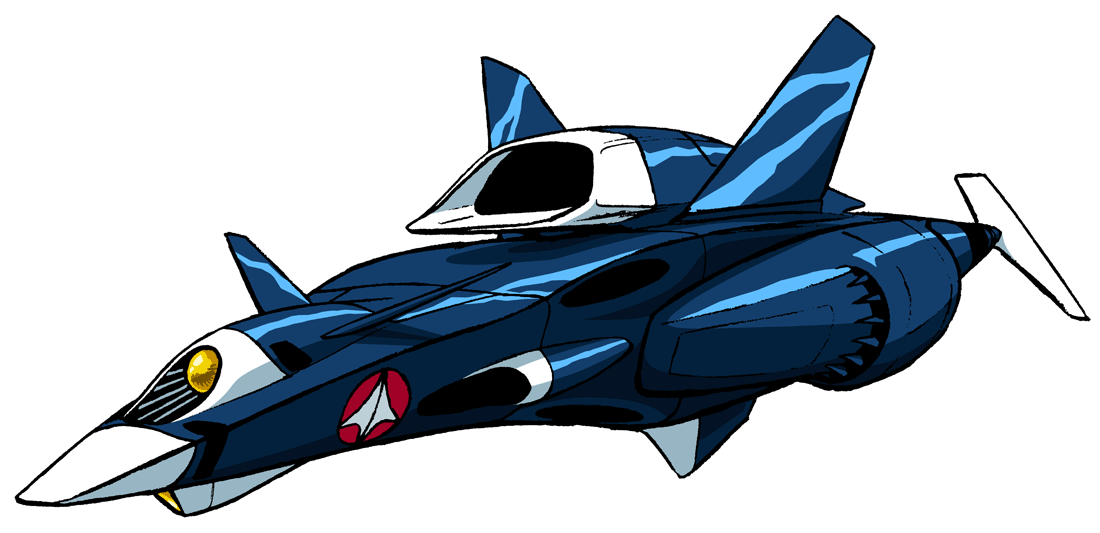 | | Blue Standard Version; Found most commonly in tandem to starships and as Interdiction Ball shepherds. |
|---|
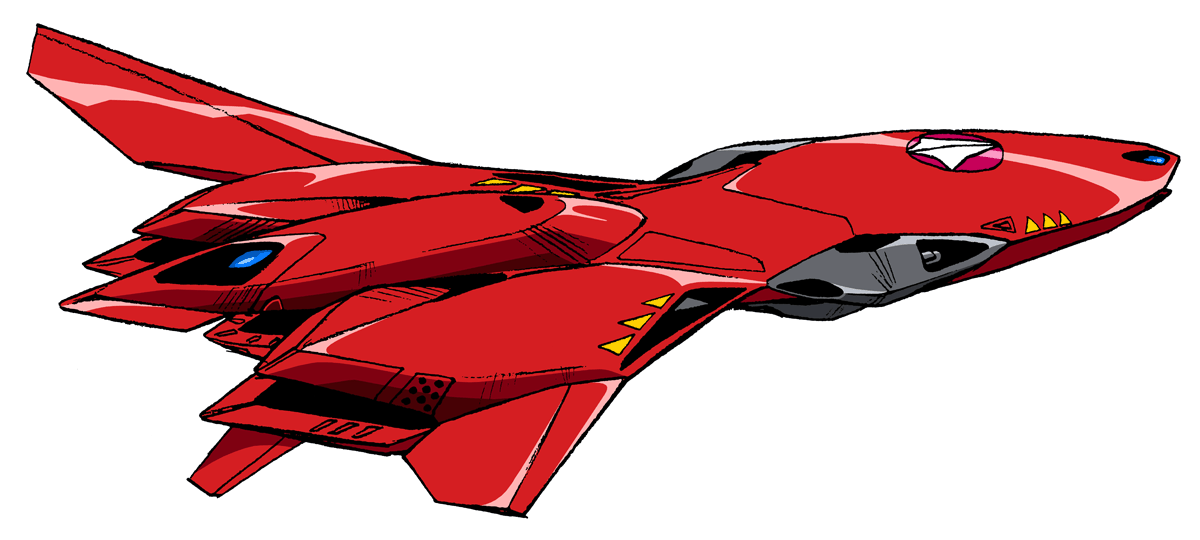 | | Stealthed Red Version; Found almost exclusively in strike missions. |
|---|
The ID-3,000 Intelligence Drone is the UGC's continuation of the old RDF-Era QF-3,000E Ghost, but with a significant twist; While the QF-series Ghosts were locked into laser cannons for weapons, the ID-3,000 series has any one of several options available. Among them is a simple surveillance package, laser battery package, missile package, grav pod package, message relay package, navigation beacons, and many more. Also, ID-3,000's are equipped with stealth and shadow cloak system to decrease their visibility.The slectiojn of the Ghost series by the UN Spacy 500 years ago amounted to needs and availability. The Spacy needed so 5,000 units immediately, and were able to recover nearly 25,000 in flight-ready condition at the time. This left the RDF with the option to develop other options as well, and stifled the need for a replacement at the time. It was found that replacing Ghost fighters was infinitely easier, faster, and cheaper than developing a new system that would have to be replaced in time.The ID-3,000 is used extensively by the SPES in the grav pod configuration; Indeed, every SPES ship carries one or two, at minimum, when on interdiction duty and usually has one when off interdiction duty. During time of War, fleet-deployed Cutters are equipped with their full complement (usually equal to the number of LRM's). During this time, they typically ride shotgun on the Cutters, protecting them from fire the way the Cutters protect the Spacy vsl Because they do not require a pilot, the ID-3,000 are typically stowed in crates measuring a mere 54' by 31.5' by 15', in stacks of 25 crates.There is an old joke that the Ghost lives in purgatory, until it goes to Hell. That joke is unfortunately true; These drones are rarely used unless combat of some sort IS expected, with the exception of those equipped with interdiction control grav pods (colloquially referred to as "shepherds," the most boring of duties the UGC has) or nav beacons; It's enough to even make the people assigned to go a little batty, making doughnuts and chasing petty wannabe-smugglers, while the real smugglers get through using the wannabe's for cover. They are also used in a wide variety of other missions, such as automated couriers (in fact all official UGC message couriers are Ghosts with the missile pods removed to hold the message/s being couried), as salvage and recovery drones (mostly with ships), and as automated beacons for AToN. Automated courier drones "can" be equipped with FTL drives but this is not the normal practice; A Ghost arriving with an FTL drive installed (a derivative of the Antran warp drive) is a sign that something very unpleasant awaits her addressee. With increasing message traffic this is becoming less uncommon, but it's still a very expensive upgrade and thus not generally seen.The F/ID-3,000 is the most advanced of the drones series; At approximately half the size of a standard fighter, the Ghost mounts three revolutionary thermonuclear turbine engines and numerous maneuvering verniers that give the fighter incredible speed and agility both in an atmosphere and in space (and the Ghost can be mounted with certain FAST packs for additional thrust if necessary). The armament for the drone is more modest but still impressive, including five pulse lasers and 29 high-maneuverability micro-missiles. In combat the Ghost relies on its speed and maneuverability to conduct hit-and-run attacks on multiple targets, allowing it to often take out entire squadrons before the enemy has a chance to retaliate. But the most impressive feature of the fighter is its onboard AI (artificial intelligence) computer system. The craft can be piloted by remote control from a UGC Station, or can be allowed to operate autonomously in combat. The AI system is quick, clever, and almost savage in the ferocity of its attacks. The system uses an analog-digital hybrid cognitive process, coupled with a 20,000 simulated combat "protocol," which permits the AI both to formulate new plans and strategies on the fly as well as learn during combat to improve its performance. The combination of the Ghost's intelligence, speed, and weaponry make the small drone extremely deadly in combat, able to hold its own against even advanced Veritechs; However, the best drones still are no match for the most basic of biologic capabilities, and therefore have rarely fared well in actual combat except by sheer weight of numbers.With the same number of Guardians versus Veritechs, the Guardian force SHOULD have an 85-90% victory rate at only a 25-30% loss-lead. Because of this, the Ghost has been absolutely rejected by the UGC as a "replacement" for manned fighters, but has been warmly welcomed as an adjunct to them. Research continues at the Macross Consortium, so it may only be a matter of time before a new Ghost fighter is produced that is superior in every way to combat pilots.The Stealthed Ghost can be any color due it's Chameleon System, however when working an intelligence detail it generally goes for a subdued or camouflaging scheme, while in a combat mode generally finds a very BRIGHT, flashy scheme to draw enemy attention (and therefore fire) away from the manned fighter. In common patrol, they go for red for this reason.It should be noted that the F/ID-3,000 Ghost Fighter/Intelligence Drone comes in two main variants; The Blue Unstealthed version, who's airframe dates back the to Terran Global Civil War and saw extensive against the T'sentraedi and in the rebuilding efforts after that war and the wars against the Invid, and the all new Red Stealthed version, who's advent midwifed of the Automated Drone program (after the Assault Drone's lack of automated air cover led to questions in the Council).VariantsThere are a fairly wide array of Ghost variants. The most important currently is the Beacon variant, in which the missile systems and five of the lasers are replaced with various antennas and sensors to assist spacers in safely navigating a system and traffic pattern to avoid collisions. These are not unarmed platforms; Though their combat abilities are badly degraded, they can still take a few shots which is rarely enough to harm an aggressor but is always annoying and more importantly becomes a warning to the drone's base stations of an impending threat. They serve both as nav beacons and as watch and wards, as every ship be she friend or foe entering or exiting the system on an established route (and sometimes outside of those routes) passes by the beacons, thus creating a record of her passage.The Courrier variant is exactly what it's described as, a basic hull used to transmit messages either too urgent, complex, or sensitive for radio based transmissions. As in the beacon variant the majority of the weapons systems are stripped out, in this case with the open cavity replaced by message canisters and/or message configured MSE-6-Series Repair Droids. The Ghost can carry any type of package but alternatives are very rare.Guard Dog variants are overwise standard Ghost fighters that will ride shotgun to fighters and ships trying to protect their charges in combat. They have been observed to deliberately fly into the path of missiles, but more often will fall in behind their leader to protect their six o'clock position, If a fighter or ship is lost, the surviving Ghosts will attempt to form up with another unit; If there are no responding stations, they're programed to retaliate to exclusion- They become missiles themselves, with no other interest than destroying the aggressor and make them pay for their 'victory.'The Patrol-specific Interdiction variant, better known as "shepherds," are used to keep interdiction ball rings intact. Intermittently they will begin retrieving degraded interdiction balls, smelting them down and reprocessing them into ID balls (the applicable equipment replaces the missile pods). They will also very aggressively attempt to intercept ships trying to run the blockade if possible, though they are programmed to treat launches as higher priority than landings.Salvage And Repair variants are used to collect material for reprocessing, or to assist in repairs on ships too large to be accommodated in a spacedock (currently the BREETIA TULL-Class Ultra-Dimensional Fortress and SORJOURNER-Class Escort Carriers. They typically operate from OUTLAW-Class Repair And Salvage Ships though exceptions occur (most BREETIA-Class UDF's and SORJOURNER-Class CVE's have a few onboard for their own repairs).A basic Sentry variant consisting of additional sensors bolted to the frame (mostly the dorsal aspect) standby watching sections of space around a system looking for any ships that attempt to enter outside the standard approach routes. Their programmed to fire a warning shot of twin micromissiles that will detonate at twice the maximum range of the explosion in a very bright flash to gain the ship's attention, then query the vsl as to intentions. Whatever response is retransmitted to the Ghost's base station, including no response at all, but the Ghost will not take further action if the vsl doesn't fire back (they will however track the vsl).The Strategic Weapons variant is essentially a Ghost with its missile pod removed and replaced with a reflex missile warhead. These are only used on massive targets, space stations and cities, when alternatives are not possible either per the UGC RE/DF Weapons: Mass Destruction/Effect Policy Manual. They are most commonly used in space during invasions to disable or destroy enemy invasion assets (troop and landing ships).Name: ID-3,000 Intelligence DroneModel Type: DroneCrew: Crew: (!None! Can be controlled remotely by a pilot or operated autonomously via AI. Passengers: NoneVehicle Type: X-9 GhostClass: Advanced Unmanned Fighter Drone (Prototype)Manufacturer: UN Spacy/Macross ConsortiumMDC by Location: |
* Front Sensor Eye
Vernier/Weapon Clusters (3)
** Engine Nacelles (2)
*** Fuselage | 15
35 each
125 each
200 | Wings (3 or 4, depending on mission profile)
FAST Packs (2, optional)
| 60 each
75 each
|
| Notes:* Destroying the sensor eye of the X-9 will knock out the drone's major sensor systems (including infrared, night vision, and thermal). Radar and communications will be unaffected, but the Ghost will be at -4 to strike. The sensor eye is a very difficult target to hit, however; -5 to strike in addition to velocity penalties.** Depleting the MDC of one engine nacelle will reduce the Ghost's speed by 40% and give it a -3 penalty to dodge. Depleting the MDC of both nacelles will reduce speed by 80% and impose a -6 penalty to dodge. There is a Third engine in the main body that will enable the Ghost to keep flying even if both nacelles are destroyed, however.*** Depleting the MDC of the main body will disable the Ghost. If controlled by the onboard AI the Ghost will self-destruct to avoid capture by an enemy.Speed and Statistical Data: |
Flying:
Cruising: Mach 2.5; Can cruise at that speed indefinately.
Maximum: Mach 6.8.
On Interdiction Duty: Mach 0.5 Maximum; The Iterdiction Balls can't go any faster, or they fly out of control- Exactly opposite what you want to have happen.
Cruising Area: 200,000 mile radius sphere. Can actually operate an indefiante area, but any further than that and it starts to get beyond the reachable area; Otherwise, relays have to be used to maintain comms.
Height: 12.85 feet
Width: 21.41 feet
Length: 34.54 feet | Weight: 8.5 tons (slightly heavier than the original version).
Cargo: One ton of supplies COULD be loaded, but this really ISN'T a cargo craft.
Power Plant: RTK-1121 Fusion Pile Recactor (a non-Protoculture reactor, highly radioactive); Lifespan: 20 years. Each powerplant must be removed INTACT after service life termination.
Flight System: Grav pods.
Thrust System: Tractioning Drive.
Cost and Availability:About 100,000credit each; Almost always available.
Black Market Cost & Availability: About the same, really; it's not like this is all that tightly regulated. |
| Weapons Systems:Select a package appropriate to the mission. |
1. Laser Cannons: One or two integral lasers are mounted in banks of two on either side of the drone, while one slightly more powerful one is mounted in the bottom of the aircraft. All five lasers can be fired separately or in combination, against single or multiple targets. The lasers are semi-fixed forward, and can only fire within a 40 degree arc from the front of the aircraft. This pacakage can be combined with the missile package (option #2) or surveillance package.
MD: 3D6 M.D. per side laser, 1D6 times 10 from lower laser. If all 5 lasers are fired at a single target the combined blast does 3D6 times 10 M.D.
Range: 8,000 feet (2400 m).
Rate of Fire: The pulse lasers can fire up to 4 blasts per round each (however, bursts are not allowed). The lasers may be fired in any combination at a single target (roll as one blast) or may be fired individually at separate targets.
Payload: Unlimited.
2. Self-Destruct Mechanism: The other integral weapon of the F/ID-3,000 is a self-destruct function; It actually works by imploding the main reactor, as opposed to a separate weapons system in and of itself. However, this is a NUCLEAR weapon, and therefore is used only under the most extreme circumstances. They aren't even used to prevent capture- In the event of a possible capture, they'll typically be rammed into a planet or other convenient celestial object.
MD: 4D6 times 100.
Blast Area: 20 cubic mile area.
Rate of Fire: One time only.
Payload: Just one.
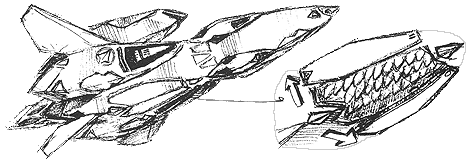 3. Missiles: For additional offensive power, the Ghost can be loaded up with missiles in an underbelly bay between the engine nacelles. When launched, the doors concealing the bay open and the missiles fire downWard out of the craft, where they then move to intercept targets either in front of or behind the drone. The missile bay is designed to use the new Bifors BMM-24 all-environment high-maneuverability micro-missiles, but can use any type of UN Spacy mini-missile if HMMMs are not available. This bay can also hold packages #4, 5, or 6. 3. Missiles: For additional offensive power, the Ghost can be loaded up with missiles in an underbelly bay between the engine nacelles. When launched, the doors concealing the bay open and the missiles fire downWard out of the craft, where they then move to intercept targets either in front of or behind the drone. The missile bay is designed to use the new Bifors BMM-24 all-environment high-maneuverability micro-missiles, but can use any type of UN Spacy mini-missile if HMMMs are not available. This bay can also hold packages #4, 5, or 6.
Missile Types: Any standard mini- or short-range missile, including BMM-24 HMMM. BMM-24s are standard issue for the Ghost.
Damage and Range: Varies with missile type.
Rate of Fire: Can be fired individually or in volleys of any number (2-29) of missiles. If necessary, all 29 missiles can be fired in a single volley.
Payload: 30 mini-missiles or 10 SRM's. | 4. Surveilance Package: Any range of standard sensory equipment can be loaded in, but only two or three of them; For example, MRI, Radar, and Thermographic.
Effect: 100 times the normal the range and sensitivity of the effected sensor.
Actions: Up to five WITH THESE SENSORS per melee.
Payload: Up to three sensors.
5. Grav Pods: Used to move and corral Interdiction Balls to enforce an interdiction, only available in the unstealth (blue) version.
Effect: Simply pulls the balls along and into the proper trajectory.
Effect Area: As much as a mile around the craft.
Actions per Melee: Up to five WITH THIS SYSTEM.
Payload: Unlimited.
6. Bombs: Unpowered versions of the normal mini-missile or SRM Warheads.
Damage, Range, and Blast Area: Simply pulls the balls along and into the proper trajectory.
Rate of Fire: Up to five WITH THIS SYSTEM.
Payload: Triple the normal missile load with SRM or quadruple mini-missiles.
7. Sensor-Jamming FAST Pack: The FAST Pack developed specifically for the Ghost each contain a combination chaff/flare pod that can be used disrupt optical sensors and radar on both missiles and attacking fighters.
Game effects: When jettisoned, the pod explodes and releases both chaff and flares, confusing all sensors of enemy craft. Any missiles fired at the Ghost AUTOMATICALLY MISS (regardless of number of missiles) and are lost. In addition, the Ghost AUTOMATICALLY wins initiative and gets to strike first in the following combat round. The Ghost can use the pods at any time during a combat round, even if the drone has lost initiative.
Damage: None, other than effects described above.
Payload: 2 pods, one per FAST pack.
|
| Features: |
- Artificial Intelligence (AI) Combat Computer: The Ghost is equipped with the UN Spacy's most advanced AI combat computer available, which allows the drone to operate autonomously during missions without input from human controllers. The AI computer is smart enough to devise new strategies and use subterfuge to win battles if unexpected events happen or of the odds turn against the drone. In addition, the computer learns to anticipate and counter enemy maneuvers during combat. For every 5 rounds the Ghost is engaged in combat against a foe, the X-9 gets a +1 to initiative (cumulative) for the remainder of combat. This bonus is only valid when the Ghost is solely piloted by the AI; If a technician takes over remote control of the craft the bonus is lost.
The AI computer of the Ghost is not without its faults and problems, however. The computer uses bio-neural circuitry patterned after the human brain, which unfortunately has tendencies for self-preservation and illogical behavior during combat. Any time the Ghost receives over 30 points of damage in a single round, roll on the percentile table below to see if the AI malfunctions.
01-65: No malfunction.
65-75: The Ghost breaks off combat and retreats at maximum possible speed.
75-85: The Ghost locks onto a single enemy target and tries to destroy it at all costs. It will ignore any other enemy craft (even if attacked by them) and will even try to ram the chosen enemy if it is out of weapons. If the target is destroyed the Ghost will return to normal operation.
85-95: The Ghost goes berserk and attacks any aircraft (militry or civilian) it can detect, regardless of alignment. Controllers at a UN Spacy base can regain control of the Ghost if they make a successful Computer Operations roll at -20% to skill.
95-00:As above, but the Ghost will no longer respond to remote control signals. The drone will go on a rampage and attack any aircraft it can detect until it is destroyed. (GM's: Yes, it's happened before.) - ESM: Radar Detector. Passively detects other radars being operated.
- Radar: Military grade radar. Range 100 miles, can track up to 50 individual targets. 95% reliability (00% against unfriendly stealthed vehicles).
- Blue Force Tracker: Identifies friend from foe. Overlays the information on both the radar and HUD, ensuring that friendly forces are not accidentally targeted.
- GPS: Standard tracking device. Ties into the Blue Force Tracker.
- Anti-Jamming System: Reduces Electronics Countermeasure by 3/4 (decrease skill level appropriately).
- FLIR/SLIR: ForWard and Side Looking Infrared. Allows pilot to get visuals on targets at night.
| - AMC/FD (2): Anti-Missile Chaff/Flare Dispensers. Actually launches a glob of burning magnesium/aluminum alloy to confuse both radar AND heat sensory systems. Fires off 04 chaff/flares each time it is activated. The FAST Pack used by the F/ID-3,000 is actually a greatly upgraded version of this system, coupled with the smoke dispensers. The system is KNOWN to work on all KNOWN radar and infrared systems, but concerns continue that somewhere out there their MIGHT be a system that will be totally unaffected by the system. Reduce effects by 20% against smart missiles (add +20% to rolls for smart missiles).
Effect:01-50 Enemy missile or missile volley detonates in chaff cloud-- Missiles are all destroyed.
- 51-75 Enemy missile or missile volley loses track of real target and veers
- away in wrong direction (may lock onto another target).
- 76-00 No effect, missile is still on target.
Also note that the chaff cloud will also blind nearby heat sensors (and optically based sensors at night) for 1 melee. They will suffer the following penalties: Reduce melee attacks/actions, and combat bonuses by half.
Duration: 1D4 melee rounds.
Payload: 60 chaff/flares. Each time the system is engaged, the system fires off 04 chaff/flares.- Virtual Map: Displays a continuously-updating map of local area. Takes data from and gives data to other friendly units in the area. Effective navigation of 85% as updates come. Good to 500 miles. Specific range can be adjusted in 1 mile increments.
- Video Camera: Records from the HUD. 50 hours of recording available.
- Full range optic sensory suite: Infrared, ultra violet, Magnification, night sight, color filters, thermal imager. Range is about 200 miles for MOST sensors.
- Smoke dispensers (8): Throws out smoke flares capable of covering a 50 square foot area. Special chemicals in the smoke obscures IR and heat sensors, and defeats visual tracking of the vehicle. Note that it DOESN'T make the vehicle invisible, but simply negates ALL bonuses to strike. Smoke's effect in space is actually greater than in an atmosphere, since the lack of a gravity well prevents settling, and casues the pod itself to drag the particulates.
- Stealth: Gives the aircraft the radar cross-section equivelent to that of a hummingbird, hides the infared signature to that of a bad cough, and minimizes other radiation from the craft to essetially nil. The acoustic signature also has been minimized using various techniques.
- Chameleon System: Pleizio-ceramic tiles darkened or lightened as necessary to render the craft invisible.
Minimum Effective Distance: 2,910 feet.
|
Combat Profile For F/ID-3,000 Ghost/X-2:As mentioned above, the X-9 Ghost can operate autonomously or can be directed via remote control from a UN Spacy base or starship. The stats below represent bonuses for operators trained in remote control operation of the Ghost fighter. In order 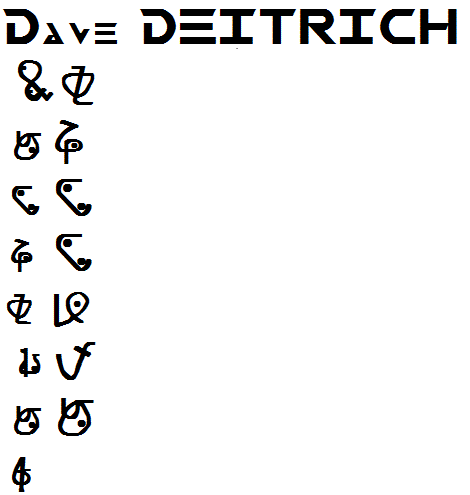 to have X-9 Ghost combat training the controller must also have the following skills: Computer Operation, Radio: Scrambler, Read Sensory Instruments, Pilot: Jet Fighter (or Pilot: Variable Fighter), and Weapon Systems. Untrained operators attempting to control a Ghost fighter only get bonuses equivalent to Veritech Basic Training. Switching between modes is instantaneous; They're actually on autopilot with a pilot override option, meaning once the pilot gives an order the fighter will obey it, but once they stop giving the order the craft will attempt to return to their original heading and operations. Only when the fighter is slaved to another craft will it continuously accept overrides, changing course to match the leader. Permanent course changes can be put in from any authorized base station. to have X-9 Ghost combat training the controller must also have the following skills: Computer Operation, Radio: Scrambler, Read Sensory Instruments, Pilot: Jet Fighter (or Pilot: Variable Fighter), and Weapon Systems. Untrained operators attempting to control a Ghost fighter only get bonuses equivalent to Veritech Basic Training. Switching between modes is instantaneous; They're actually on autopilot with a pilot override option, meaning once the pilot gives an order the fighter will obey it, but once they stop giving the order the craft will attempt to return to their original heading and operations. Only when the fighter is slaved to another craft will it continuously accept overrides, changing course to match the leader. Permanent course changes can be put in from any authorized base station. |
F/ID-3,000 Ghost/X-2 In Manual Control:- 4 attacks per melee (plus those of the pilot).
- Add one additional action/attack at levels three, six, nine, and twelve.
- +3 to strike.
- +6 to dodge.
- +3 to roll with an impact, reducing damage by half.
- Critical strike same as pilot's hand-to-hand.
- Full-speed Ram - Does 1D6 times 100 M.D. to BOTH the Ghost fighter and the target. Used as a suicide attack only.
| In Autonomous Mode:- Nine (!) Attacks per Melee.
- +2 on initiative (+5 with active stealth), plus learning bonuses.
- +5 to strike.
- +9 to dodge.
- +5 to roll with an impact, reducing damage by half.
- Critical strike on an unmodified roll of 18, 19, or 20.
- Full-speed Ram - Does 1D6 times 100 M.D. to BOTH the Ghost fighter and the target. Used as a suicide attack only.
|
Skills:- Optic Systems (80%).
- Detect Ambush (80%).
- Detect Concealment (75%).
- Tracking (75%).
- Navigation (90%).
|


 3. Missiles: For additional offensive power, the Ghost can be loaded up with missiles in an underbelly bay between the engine nacelles. When launched, the doors concealing the bay open and the missiles fire downWard out of the craft, where they then move to intercept targets either in front of or behind the drone. The missile bay is designed to use the new Bifors BMM-24 all-environment high-maneuverability micro-missiles, but can use any type of UN Spacy mini-missile if HMMMs are not available. This bay can also hold packages #4, 5, or 6.
3. Missiles: For additional offensive power, the Ghost can be loaded up with missiles in an underbelly bay between the engine nacelles. When launched, the doors concealing the bay open and the missiles fire downWard out of the craft, where they then move to intercept targets either in front of or behind the drone. The missile bay is designed to use the new Bifors BMM-24 all-environment high-maneuverability micro-missiles, but can use any type of UN Spacy mini-missile if HMMMs are not available. This bay can also hold packages #4, 5, or 6.
